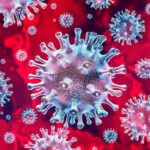
By Daniel Brouse
help@membrane.com
“I describe it as a bit like somebody throwing a hand grenade into our immune system, that all the populations [of immune cells] are completely topsy turvy and unsettled for years. And, that’s a guess, but we’ve got the technology to look at that in quite a lot of detail,” said Professor Danny Altmann, from the Department of Immunology and Inflammation at Imperial.
In September of 2023, The Lancet Respiratory Medicine reported, “Long-standing multiorgan impairment following SARS-CoV-2 infection has been a major concern for individuals recovering from severe disease and is thought to be caused by a multitude of factors, including direct viral cytotoxicity, chronic inflammation, ischaemic injury, acute reactivation of other viruses, metabolic derangements, and acute treatment effects (especially invasive ventilation). Numerous reports of delayed organ complications such as myocarditis, stroke, and pulmonary emboli have led to speculations that the multiorgan dysfunction caused by COVID-19 might be responsible for impaired recovery and ongoing symptoms in individuals, a condition referred to as long COVID.”
We know COVID causes long term health and wellness impacts, such as:
* Permanent Organ Damage
* Persistent SARS-CoV-2 RNA in multiple organs and throughout the brain
* Destruction of Good Gut Bacteria Resulting in a Compromised Immune System
* Epigenetic Modifications (Changes to DNA)
* Change in Cell Fate
* Tryptophan Deficiency
* Dysfunctional Kynurenine Pathway
* Neurological Damage
* New-Onset Alzheimer’s Disease
* Exertional Intolerance, Oxygen Extraction, Reduced Exercise Capacity
* Down Regulating NAD+
* Up Regulating IDO
* Rogue Antibodies
* Insulin Reduction, Diabetes, High Cholesterol, Heart Disease and Stroke
* Increased Risk of Cancer
* Blood Clots
* Hypertension, Vascular Disorders, Myocarditis and Heart Disease
* Multisystem Inflammatory Syndrome in Children (MIS-C)
* Dysregulation of the innate immune system, i.e. “cytokine storm”
It is important to note that the severity of disease in humans is not determined only by virus replication but also by the host immune response to the infection, which may lead to dysregulation of the innate immune system, i.e. “cytokine storm” (Omicron SARS-CoV-2 can infect faster and better)
These are some of the causes of long-COVID symptoms that have been identified. There are likely many more.
Everybody’s response to COVID is unique; however, most people are likely to develop several of these disorders. For instance, the genetic abnormalities were found in 1-3% of the prepandemic population. In the population of COVID survivors, 50-75% of individuals exhibit these genetic abnormalities. Currently, there is no cure for any of these ailments. Another example is the loss of taste and/or smell. In the study UGT2A1/UGT2A2 locus is associated with COVID-19-related loss of smell or taste people that are genetically predisposed to have problems with taste and smell genes are more likely to lose their senses to COVID. Of those people that lose their sense of taste or smell, 20% will not recover their senses.
COVID causes negative feedback loops. COVID appears to cause the most damage to the weakest or most vulnerable parts of the body. If you were predisposed to a condition prior to COVID, you will likely develop the condition after COVID. An example would be people with type II diabetes. If you have diabetes prior to COVID, then you are at high risk of dying from COVID. If you are prediabetic, COVID will likely make you diabetic. If you are not inclined to develop diabetes, COVID will likely increase the probability of developing diabetes. The same holds true with NAD+, IDO, P53 tumor suppression genes, and all the other conditions listed above.
Vaccination is the best method for preventing all of these conditions. Unvaccinated people are 8x’s more likely to contract COVID. Vaccinated people that contract COVID are 50% less likely to develop long-COVID. Get vaccinated; however, vaccination alone is not enough. One should also wear an N95 mask and socially distance.